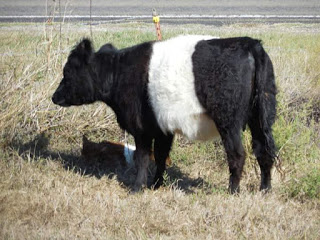I had one of my former players, who grew up in a ranching family and community ask me this question. I went back through my posts and found I really hadn't put forward a detailed answer. So here it is.
First, much like my friends labeled Deplorables, Libertarians, Constitutionalists, libertarians, anarchists, survivalists, homesteaders, hippies, and everyone else who tries to limit the amount of money that Uncle Sugar picks their pocket for, they serve as a tax hedge here in Texas. You need 4 horses or 4 head of cattle as a minimum to qualify for, and keep, an Ag Exemption on our place. This limits our tax bill and increases money kept in our pocket, which allows that capital to go to work in other places.
Our piece of land is black clay, which to start with is a poor growing medium. Irrigation is too cost prohibitive to make sense here, so we were also looking for drought tolerant cattle that could survive on poor range/pasture/hay. The place had also been over grazed a bit with horses so there wasn't much growing on it for the cattle to "make a living" off of to begin with.
The Galloways are generally thought to be only second to the Texas Longhorn in their ability to not only survive on poor pasture land, but gain weight and thrive on poor range. That proved really true with my two heifers that I purchased at 4 and 6 months old respectively. They received no supplemental feed other than a salt block and a bucket of grain to follow as we take them from paddock to paddock. Those heifers are now cows and are thick and meaty. I trust the three young steers will follow that pattern.
This is a very part time job for me until I retire, but I'm trying to build something that is scalable for after my retirement. The Belted Galloways have to make a profit for the farm with little time or capital input. The Belties are easy on fences, other than my bull who has figured out that he can walk through barb wire strands alone, but won't get close to hotwire. They are easy to manage in paddock shifts, so that's a big plus for us. Land carrying capacity here is around 1 animal unit per acre (I'm at in North Texas) the Oreos are somewhere between .5 and .75 animal units, so the hope is to carry a few more total head than I could with conventional cattle that spreads my risk.
If I carry full size cattle I could probably get away with a bull and 3 cow calf pairs. If I sell at 2 years, we'd be carrying 10 animal units +/-. If I lose a calf, I lose 33% of my potential profit. If, with the smaller Belties I carry a bull, 5 cows, still selling at 2 years I'm carrying 8 - 12 animal units. If I lose a Beltie calf, I've only lost 20% of my profit potential.
Risk management on the homestead is different than on a working ranch and I'm the first to admit that. Just weight-wise 3 two year old large framed cattle, grass fed and finished should have a dressed weight of around 1200 pounds each for around 3,600 pounds total. Where 5 two year old Belties should dress at about 675 pounds each that's only 3,375 pounds, but losing one of each puts the full size net beef at 2,400 pounds where losing one Beltie still nets 2,700 pounds of beef. It's less meat overall, that's true, but it also allows me to put aside an area to graze, not overgrazing during drought years, and focus on our primary mission of growing soil.
Belties are half to three quarters the size of conventional cattle and I'm not nearly as nervous working them by myself as I would be with full size cattle. They're easy birthers, great mothers, and each cow will birth up to 18 calves in a lifetime. They have a compact productive frame, meaning they have a carcass yield of meat usually over 62% for steers, and that equates to cash in the pocket for us.
The last thing is as the slow food movement grows more folks are looking for grass fed, grass finished beef. I live within an hour of more than 7 million people, I only need to find a dozen or so folks that I can sell premium products to, who are also willing to pay a fair price to the producer. Part of the process is in educating our customers that grass fed and finished beef takes longer and thus simply costs more. Providing recipes on how to cook ever cut they pick up from the butcher, and giving them a bit of the experience of the farm.
Finally, I saw commodity farming growing up, it's a tough way to make a living. I'm willing to cater to folks from a marketing and customer service standpoint to make our homestead work. There is real market demand for this type of beef is real and growing.




























